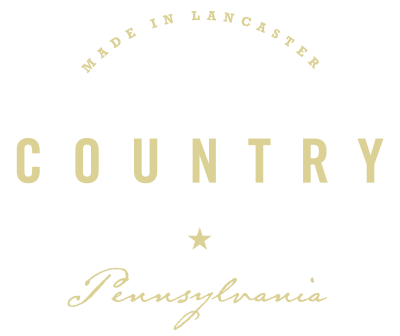Goodness for all
A SMARTER, SAFER FINISH –
PROTECTING YOUR KIDS, THE PLANET, & OUR CRAFTSMAN
At Country Classic Collection, we are excited to announce that all furniture produced starting this summer will be finished with Waterborne. This eco-friendly initiative means that our products will be finished with stains and varnishes that are not only durable but also safe for both humans and the environment. We believe in making responsible choices that benefit our customers and our planet without compromising on quality. With Waterborne finishes, our timeless pieces will continue to adorn homes with the same classic charm while contributing to a more sustainable future.
SAFER for the air we breathe – non-toxic, low-VOC, and eco-friendly
EASY cleanup with water
RESISTANT to abrasion, chemicals, humidity, chipping, and cracking
CRAFTED WITH CARE, FINISHED RESPONSIBLY
Waterborne vs. Solvent-Based Finishes
HEALTH
WATERBORNE
A. Releases water vapors which are non-reactive or dangerous
B. Contains no carcinogens or have any carcinogenic properties
C. Only approved coating for furniture in nurseries. It is safe for children as it cannot cause any adverse reactions.
D. Contain no HAPS (Hazardous air pollutants)
SOLVENT
A. Off gases formaldehyde which can cause long term health problems and birth defects
B. Listed as carcinogens which can cause cancer and respiratory issues
C. Not approved for nurseries, health facilities, lab areas, and some public spaces
D. Contains Haps in abundant amounts;
Haps are air pollutants that are known to be carcinogenic or create negative human interactions
ENVIRONMENT
WATERBORNE
A. Waste is not considered hazardous
B. Built off a resin that uses water as its backbone
C. Drops yearly VOC consumption by more than 3-fold
D. Need no acetone (thinner) to clean equipment…most of it can simply be cleaned with water
SOLVENT
A. Waste is hazardous and must be disposed of by a licensed HAZMAT company
B. Built of a resin that uses solvents like acetone, ethanol, or petrol as its backbone
C. High volume of VOC’s annually requiring extra licensing and regular inspections by DEP
D. Takes lots and lots of acetone (thinner) to clean & maintain equipment
PERFORMANCE
WATERBORNE
A. Non-Yellowing. The piece you buy today will be the same color for years
B. Better water and humidity resistance. Expands and contracts with the wood therefore you will see drastically fewer cracks in the finish (example: On doors in the joint where the stiles and rails meet, less cracking on sharp edges like raised panel doors, etc.)
C. Longer lasting abrasion resistance. Water is more “flexible” (example: centerpiece on a table will not wear through as quickly as with solvent-based)
D. Easier touchup. Can be brushed or sprayed and can be easily applied for a homeowner, touch up coatings are more readily available to the general public
SOLVENT
A. Yellows and changes color. Can be a different hue within 6 months
B. More likely to chip and crack when exposed to water or high humidity. Does not expand and contract with the wood causing more finish cracking
C. Will wear through more quickly. More brittle and not as “flexible” as water-based
D. Not as easy to touchup. Must be sprayed on, more expertise required and not as readily available to homeowners
SAFETY
WATERBORNE
A. Does not add any flammability to a surface
B. Will not spontaneously combust, no fire accelerants
C. Prices are not reactive to raw oil prices
SOLVENT
A. Forever flammable and makes the risk with wood surfaces greater
B. Can combust under direct concentrated sunlight, high heat swings, or chemical reactions
C. Highly affected by raw oil prices








